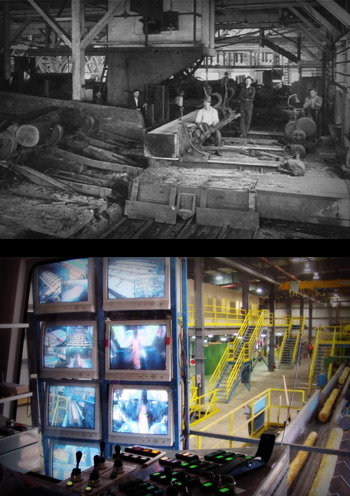Advances in Technology Reduce Waste and Protect the Forest Environment
Finally, technology has advanced since 1908. For example, technology in Washington’s mills has improved, making the mills more efficient. Today, the entire log is used, therefore, there is less waste. Computer programs can also now determine the best saw line pattern to get the most usable lumber out of a log. Another example of how technology has changed is the way lumber is transported. Railroad tracks are no longer built to get in and out of the forest. Now, high quality roads are built that are properly designed, constructed and maintained to avoid negative impacts on forest soils, streams and fish habitat. Excavators are used that will allow for building a road that fits the landscape and reduces the environmental impact of the road, including lighter impact on the soil.
Committing to these law changes, environmental improvements and technological advancements has allowed the industry to stay on the landscape by remaining flexible and responding to changing public demands. This flexibility and commitment will help the industry grow and manage sustainable forests for the next 100 years and beyond.
See some of the challenges and opportunities that lie ahead for forestry in the 21st century. ![]()

The top photograph is of a sawmill from the 1920s. Technological advances in the mills of today (bottom photograph) have led to increased sawmill efficiency.